Read the history
Creation –
Future
2011–2023
-
2011
Aiming for a “CO2-free hydrogen society”
The CO2-free hydrogen chain concept involves positioning hydrogen as an important energy option, liquefying hydrogen produced by gasifying and refining brown coal from Australia, and transporting it to Japan on a liquefied hydrogen carrier ship.
In order to achieve this, it was necessary to make a seamless system for utilizing core technologies and products throughout the supply chain, enabling the production, transportation, storage and utilization of hydrogen. In 2011, we constructed a demonstration plant at Harima Works and started testing the technology. In 2014, we succeeded in developing a 100% domestically produced hydrogen liquefaction system.
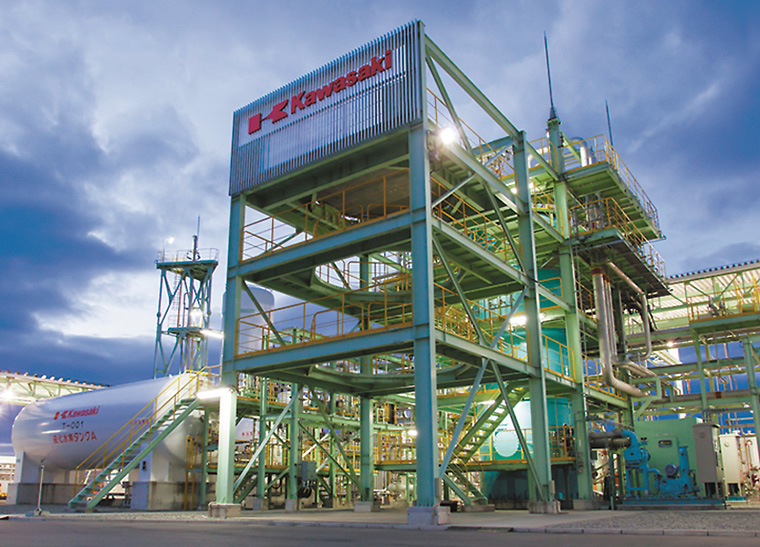
Hydrogen liquefaction plant demonstration facility built at Harima Works
-
2011
Initiatives for a stable supply of energy
In response to the stable energy supply challenges following the Great East Japan Earthquake, our company contributed to stabilizing power supply without harming the environment. We did this by enhancing the production capabilities of our Green Gas Engine, which boasts the world’s highest class of generation efficiency and environmental performance. Additionally, to address the demand for coping with power supply shortages, we increased the power generation output and quantity of Akashi Works’ gas turbine power generation equipment (manufactured by our company), and provided the power to power companies.
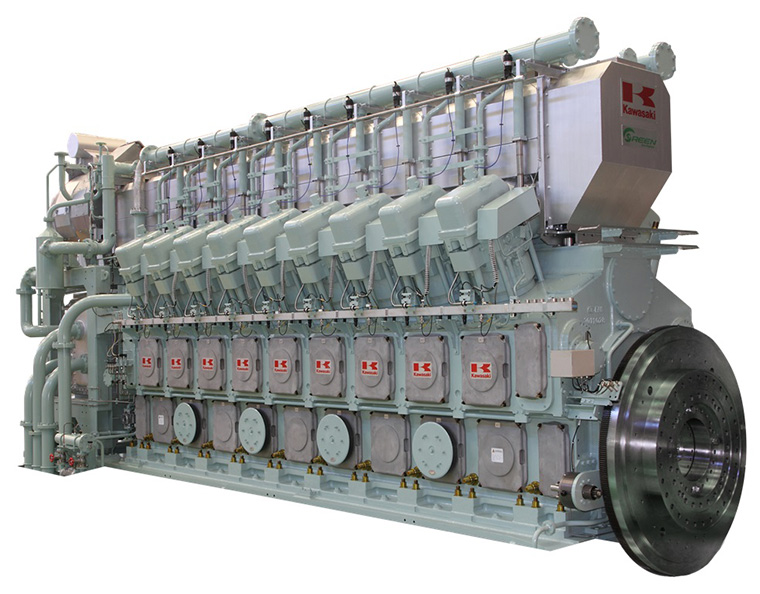
Green gas engine with highest power generation efficiency class in the world (at the time) of 49.0%
-
2012
Delivery of products with high energy efficiency and environmental performance
Japan’s first gas engine power plant with a power production capacity of 110 MW was delivered.
In August 2012, we delivered a power plant consisting of fourteen Kawasaki Green Gas Engines to Nihon Techno Co., Ltd. for Nihon Techno's Sodegaura Green Power Project (Sodegaura City, Chiba Prefecture). Each engine had a power output of 7,800 kW, achieving the world’s highest generation efficiency in its class at 49.5% (at the time), and high environmental performance with NOx emissions of 200 ppm or less (calculated at O₂=0%). This power plant had a total generation capacity of 110 MW.
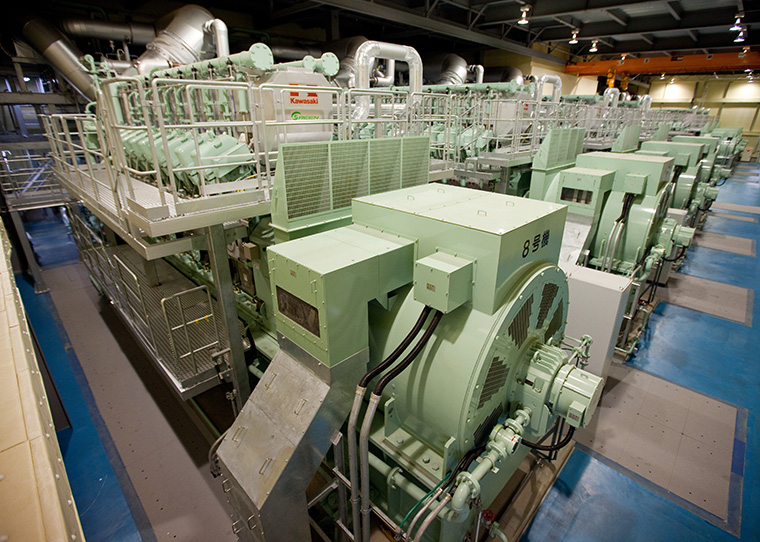
Japan’s first 110MW gas engine power plant delivered
-
2014
Plan to reorganize Kobe Works
Since the completion of the first dock, which had a maximum docking capacity of 6,000 GT, at Kobe Works in 1902, a total of four docks had been built at the Kobe Works by 2014.
The first dock, had gathered attention as a historically significant heritage site representing the early days of both the company and Japan’s shipbuilding industry. It was registered as a national Tangible Cultural Property in 1998 and designated as a Heritage of Industrial Modernization site in 2007.
Due to aging following the Great Hanshin-Awaji Earthquake, the dock, which had been in operation for 111 years, was closed in 2014. Part of it was preserved as a monument, and the rest was filled in and buried underground, resulting in its cultural property registration being removed.
The filling in of the first dock was used as an opportunity to reorganize the shipbuilding facilities at Kobe Works, and a plan was formulated.
Enhancements were made to related facilities, such as docks, quays, repair yards, dockhouses, and factories, and Kobe Works became more specialized in submarine construction.
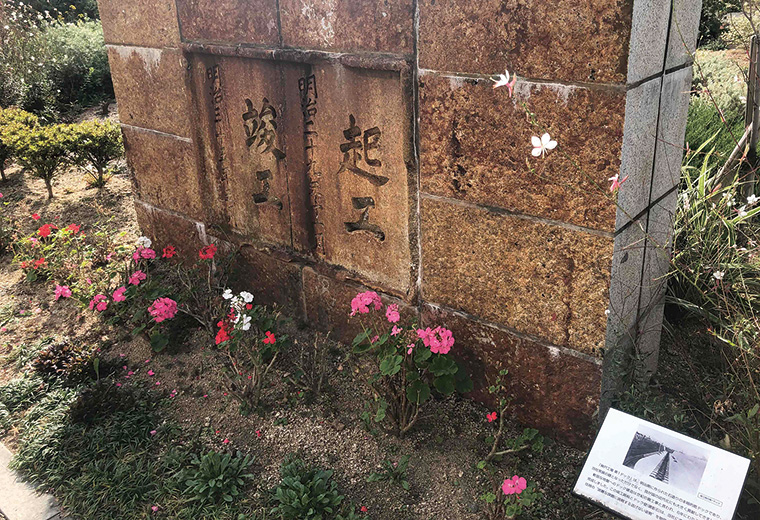
Monument commemorating Kobe Works First Dock
Story of First Dock Construction Project
-
2015
Launch of duAro dual-arm robot, which has two arms
The government proposed the utilization of robots as a solution to Japan’s shrinking workforce.
With the concept of it being “easy to use,” our company launched the duAro, a horizontally articulated robot with two arms. The development plan included coexistence with humans, not requiring safety fences, portability, ease of installation and education, and dual arms.
The duAro was praised for being user-friendly, expanding the range of robot applications, lowering the barriers to its introduction, and being usable even in small factories, stores, and offices.
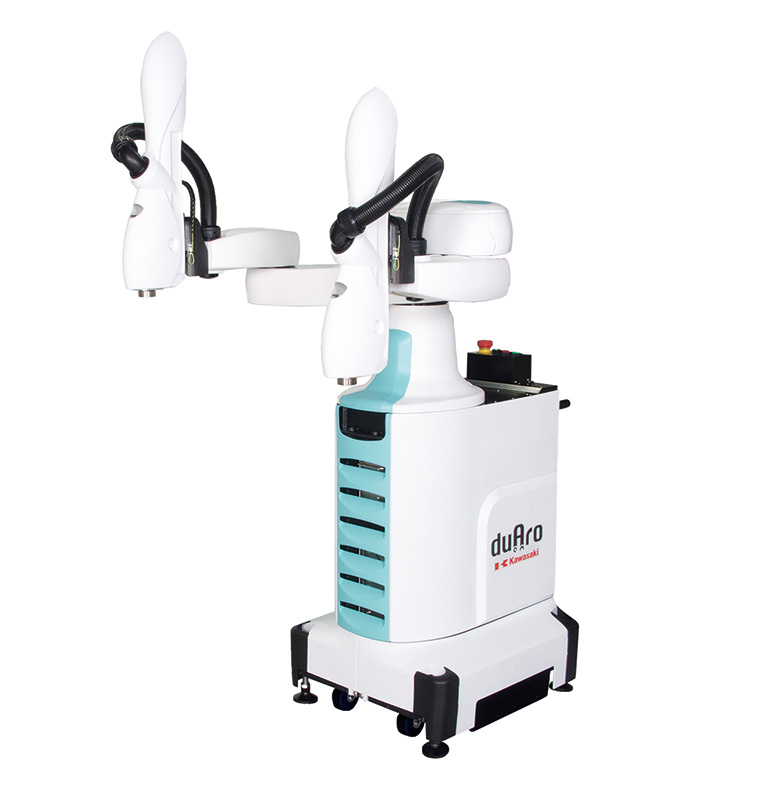
duAro
-
2016
120-year anniversary of Kawasaki Heavy Industries establishment
On October 15, 2016, we celebrated the 120th anniversary of our establishment.
During the commemorative ceremony, we displayed actual restored and reconstructed aircraft, including the Hien fighter plane developed and manufactured by Kawasaki Aircraft Co., Ltd. (at the time) during World War II. At the Kobe City Museum, we held an exhibition titled the “The Old Matsukata Collection,” which brought together a major collection of ukiyo-e prints and Western art that Kojiro Matsukata, our first president, had acquired.
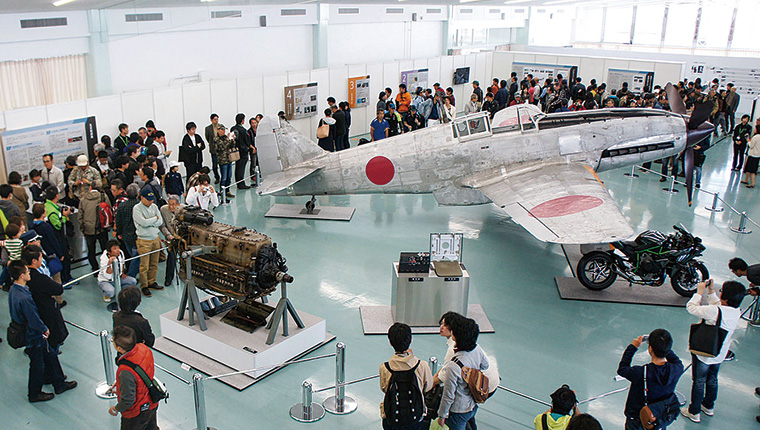
Restored Hien fighter aircraft on display at the Kawasaki Heavy Industries 120th Anniversary Exhibition
-
2017
Announcement of new robot system, Successor, that reproduces movements of skilled engineers through remote cooperation
In manufacturing, many tasks require human senses and the skills of experienced technicians, which has hindered the adoption of robots. To address this issue, we developed a groundbreaking system that uses remote collaboration technology and AI, allowing robots to learn the movements of workers and automatically convert them into programming.
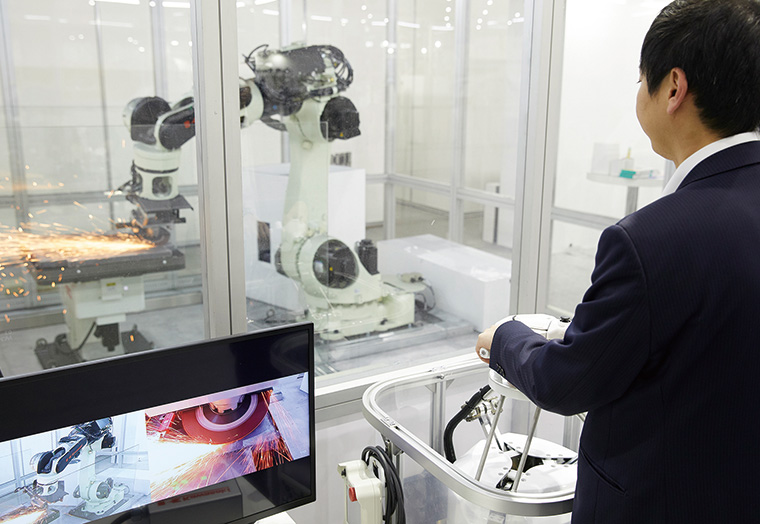
Successor
-
2018
Demonstration testing commences on world’s first hydrogen cogeneration system in an urban area of Kobe Port Island
We started demonstration testing the utilization of a cogeneration system using hydrogen gas turbines. A cogeneration system, centered around a 1 MW class gas turbine fueled by hydrogen and natural gas, was built on the former site of the Minatojima Clean Center.
This initiative was the first in the world to supply electricity and heat using hydrogen in an actual urban environment.

Smart Community Technology Development Project Utilizing Hydrogen Cogeneration System on Kobe Port Island
-
2019
Launching ceremony held for world’s first liquefied hydrogen carrier ship, Suiso Frontier
This vessel was developed to safely transport large quantities of liquefied hydrogen cooled to –253°C and at 1/800 of its original gas-state volume over long distances by sea. It transported liquefied hydrogen produced in Australia to Japan.
Launching ceremony for the liquefied hydrogen carrier ship Suiso Frontier
-
2020
Establishing Group Vision 2030 “Trustworthy Solutions for the Future”
In order to provide solutions for social issues, our Group focuses on three fields; “A Safe and Secure Remotely-Connected Society,” “Near-Future Mobility,” and “Energy and Environmental Solutions” and is transforming our business structure into a form which promises faster growth in line with societal changes.
Group Vision 2030
-
2021
Establishment of Kawasaki Railcar Manufacturing Co., Ltd. and Kawasaki Motors, Ltd. as wholly owned subsidiaries
In order to ensure their autonomous management that responded to market characteristics, the rolling stock business was spun off and established as Kawasaki Railcar Manufacturing Co., Ltd., and the motorcycle and engine business was spun off and established as Kawasaki Motors, Ltd.
-
2023
Unmanned K-RACER-X2 demonstration helicopter demonstrates ability to carry maximum 200 kg of cargo domestically
In the test for the unmanned K-RACER-X2 demonstration helicopter, it was confirmed that it can carry cargo weighing 200 kg. This is the largest cargo weight ever flown by an unmanned aircraft developed in Japan, and makes it possible to haul heavy cargo loads that cannot be transported with standard drones. It is able to provide safe distribution services in domestic mountainous regions, as well as in the event of natural disasters.
Unmanned K-RACER-X2 demonstration helicopter demonstrates ability to carry maximum 200 kg of cargo domestically